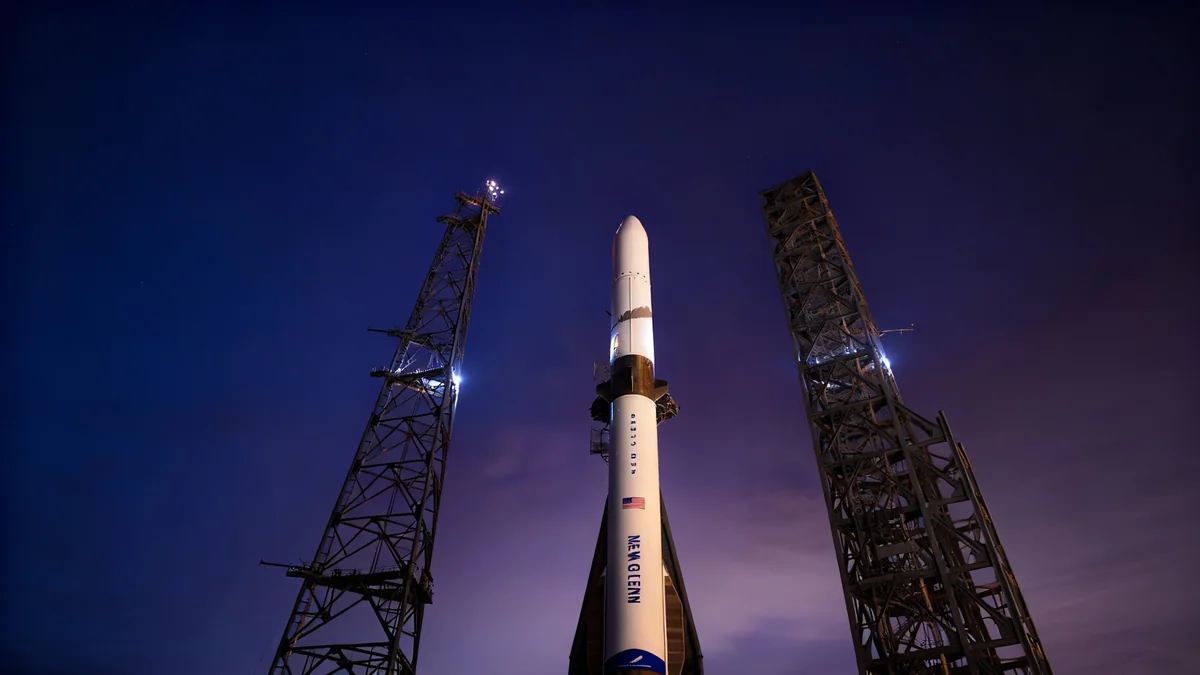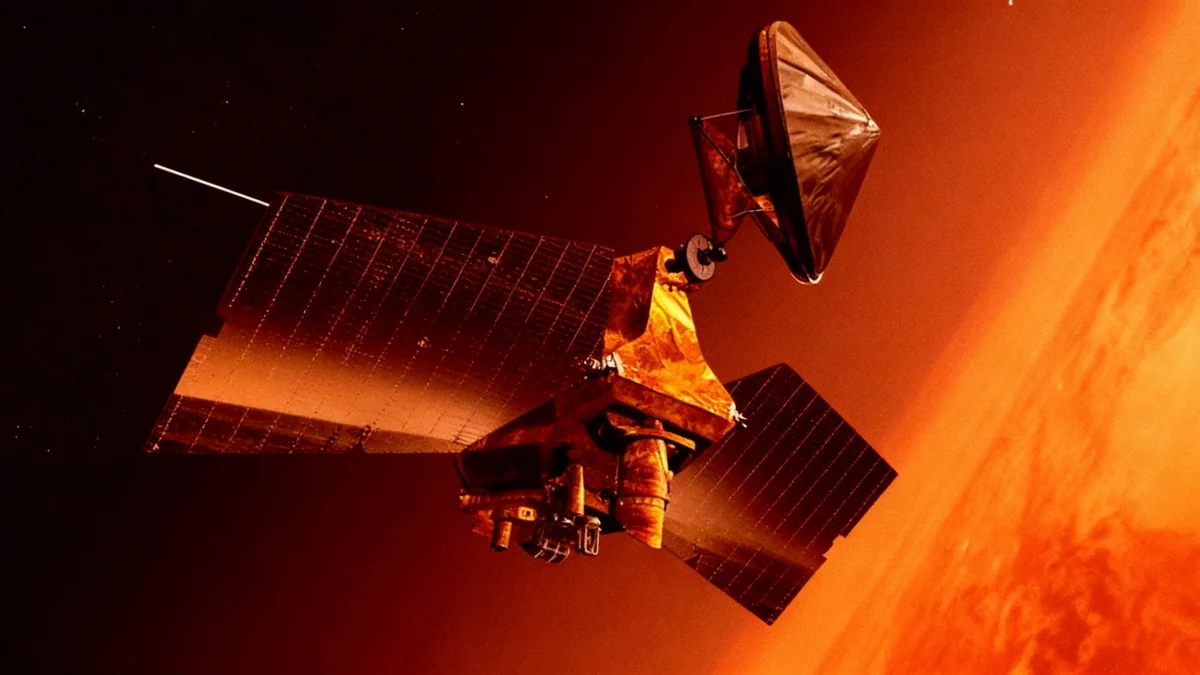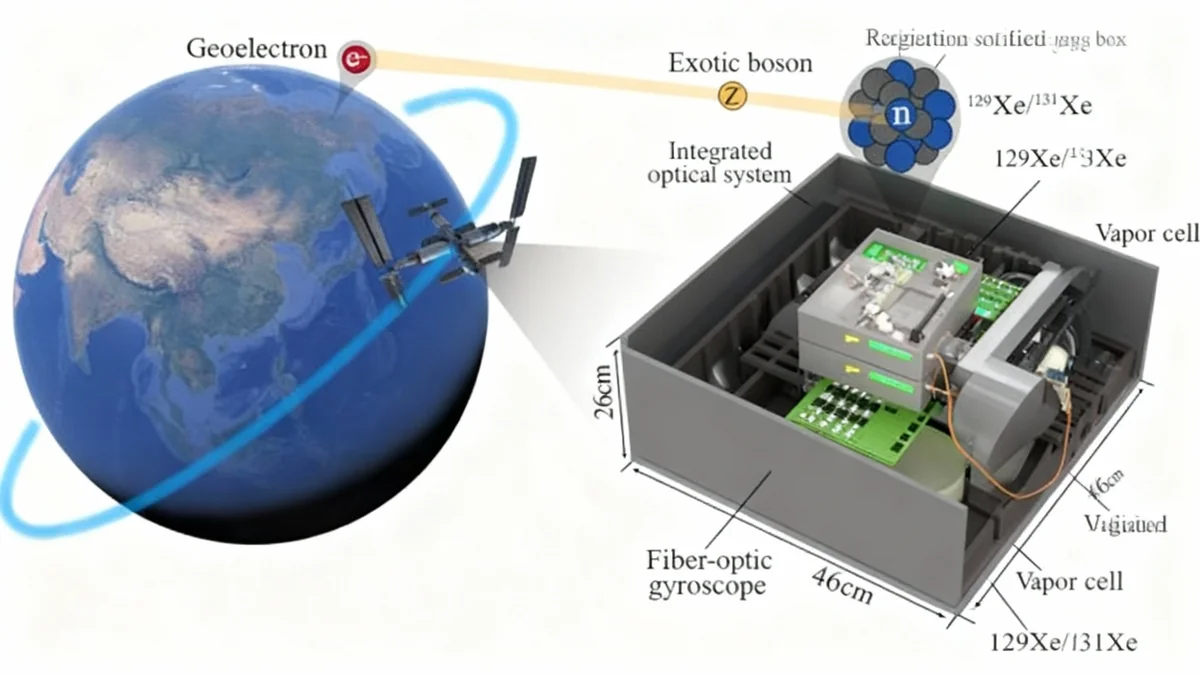Blue Origin is preparing for the second-ever launch of its powerful New Glenn rocket this Sunday, carrying a significant NASA mission to study the atmosphere of Mars. The launch of the twin ESCAPADE spacecraft is scheduled from Cape Canaveral Space Force Station in Florida, marking a pivotal test for the partially reusable heavy-lift vehicle.
The mission, valued at $80 million, represents NASA's first launch to the Red Planet in more than five years and aims to provide unprecedented data on how Mars lost its once-thick atmosphere, a key question for planetary scientists and future human exploration efforts.
Key Takeaways
- Blue Origin's New Glenn rocket will conduct its second orbital flight on Sunday, November 9, launching from Florida.
- The rocket will carry NASA's ESCAPADE mission, consisting of two probes named 'Blue' and 'Gold', to study Mars' atmosphere.
- This launch includes another attempt to land New Glenn's reusable first-stage booster on a ship at sea.
- The ESCAPADE mission will follow a complex, multi-year trajectory to reach Mars, arriving in late 2027.
The New Glenn Rocket's Second Test
All eyes will be on the New Glenn rocket as it lifts off this weekend. This flight is only the second for the massive launch vehicle, which first flew successfully on January 16, 2025. Developed by Jeff Bezos's space company, New Glenn is designed to carry substantial payloads, with a capacity of approximately 45 metric tons to low Earth orbit.
A critical objective for Blue Origin during this launch is the recovery of the rocket's first stage. The booster is designed to be reusable, a key factor in reducing launch costs. During the debut flight, the attempt to land the booster on a drone ship was unsuccessful. The company will try the challenging maneuver again on Sunday, providing a secondary point of high interest for the mission.
A New Era in Heavy-Lift Rockets
The New Glenn rocket is part of a new generation of heavy-lift vehicles designed for commercial and government missions. Its performance and reusability place it in competition with other major players in the space industry, and a successful flight and booster landing would be a major milestone for Blue Origin.
NASA's ESCAPADE Mission to Mars
The primary payload for this launch is NASA's Escape and Plasma Acceleration and Dynamics Explorers (ESCAPADE) mission. The mission consists of two identical, small spacecraft that will work in tandem to create a 3D map of the Martian magnetosphere.
The probes were built by Rocket Lab and will be operated by the University of California, Berkeley. In a nod to the university, the two orbiters have been named 'Blue' and 'Gold', reflecting the school's official colors.
"What they find will help scientists understand how and when Mars lost its atmosphere and provide key information about conditions on the planet that could affect people who land or settle on Mars," a mission description from UC-Berkeley stated.
This mission is the first dedicated to Mars to launch since NASA sent the Perseverance rover and Ingenuity helicopter in July 2020. It signals a renewed focus on understanding the planet's environmental history.
A Long and Complex Journey to the Red Planet
The ESCAPADE probes will not travel directly to Mars. The mission requires a complex trajectory dictated by the alignment of Earth and Mars, which only occurs favorably for interplanetary travel every 26 months.
The journey will unfold in several stages:
- Launch to L2: New Glenn will first deliver the probes to the Earth-sun Lagrange Point 2 (L2), a gravitationally stable point located about 1.5 million kilometers from Earth.
- Space Weather Observation: The spacecraft will remain at L2 for 12 months, gathering data on space weather.
- Earth Gravity Assist: In November 2026, the probes will loop back around Earth to perform a flyby, using our planet's gravity to gain the speed needed for the journey to Mars.
- Mars Arrival: After a 10-month cruise, Blue and Gold are expected to arrive at Mars in late 2027.
Mission Timeline
- Launch: November 9, 2025
- Earth Flyby: November 2026
- Mars Arrival: ~September 2027
- Science Operations Begin: ~April 2028
- Primary Mission Duration: 11 months
Gathering Stereo Data of Mars
Once they reach their destination, the twin probes will spend approximately seven months maneuvering into their precise, aligned orbits. From this unique vantage point, they will fly in formation to measure the magnetic fields and particles in Mars' upper atmosphere and ionosphere.
This dual-spacecraft approach will provide the first-ever stereo view of this region, allowing scientists to build a comprehensive 3D model of how the solar wind strips away the Martian atmosphere over time. Understanding this process is crucial for piecing together the puzzle of how Mars transformed from a potentially habitable world with liquid water into the cold, dry planet it is today.





